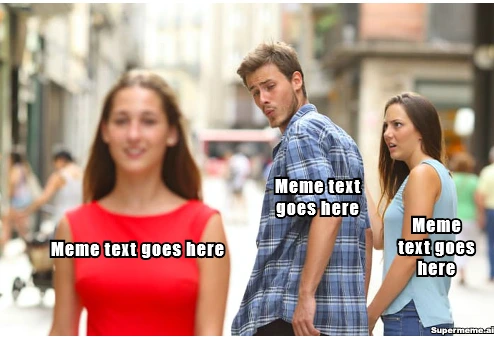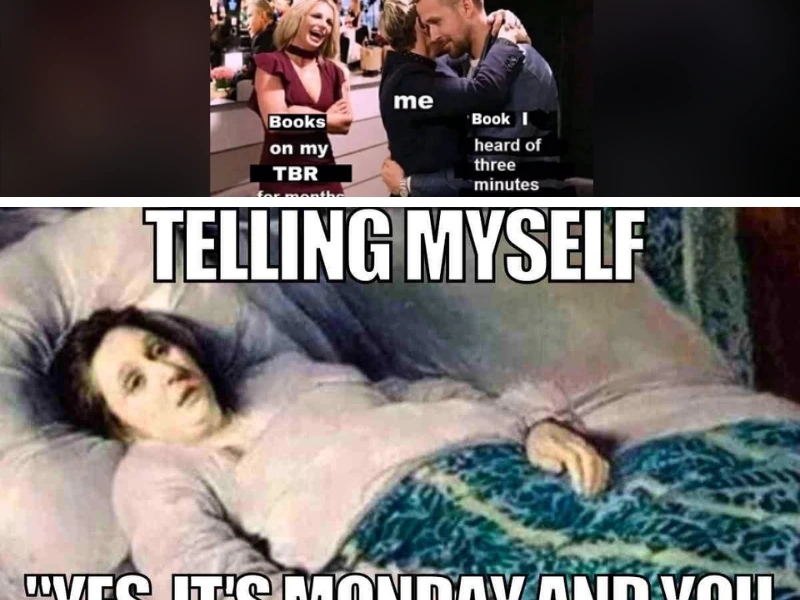A meme is a piece of content—usually an image, video, or phrase—that spreads rapidly online, often in a humorous or relatable way. At its core, a meme is a unit of cultural expression that evolves as people remix and reinterpret it. Think of it like an inside joke for the internet: you see it, you get it, and you might even add your own twist before sharing it.
In this article, SocialMedia Tutor explores the rise of the meme—what it is, where it came from, and how it continues to shape digital culture in 2025.
What Is a Meme, Really? A Clear and Modern Definition
Originally coined by evolutionary biologist Richard Dawkins in his 1976 book The Selfish Gene, the term “meme” referred to how cultural ideas spread—similar to how genes replicate. But in today’s digital world, a meme is less about academic theory and more about TikTok dances, Twitter screenshots, and that one SpongeBob image we’ve all seen a hundred times in different ways.
Memes often follow simple formulas:
- A photo or GIF (visual trigger)
- Paired with a caption or context (emotional or social trigger)
- Designed to be instantly recognizable, remixable, and spreadable
Modern memes are more than just jokes—they’re how people communicate emotions, commentary, and culture in real time. They’re used in everything from internet slang to political satire to branded marketing campaigns. A good meme is relatable, relevant, and instantly understandable.
The Evolution of Memes on Social Media: From Forums to Feeds
Memes didn’t start on TikTok or Instagram—they evolved there. The earliest internet memes appeared in the early 2000s on forums like 4chan, Something Awful, and Reddit, where niche communities created and shared inside jokes in the form of images, gifs, and ASCII art. They were raw, often chaotic, and entirely user-driven.
As social media platforms emerged, memes found a faster, broader path to virality.
The Shift to Mainstream Platforms
Facebook and Twitter helped push memes from subcultures to the mainstream. Instead of living in isolated forums, memes now appeared in public feeds, reshared by friends, influencers, and brands. Formats became cleaner and more accessible—think Impact font on top of cats, or relatable tweet screenshots.
Instagram brought visuals to the forefront, making meme pages a full-blown content category. Here, memes became more polished and aesthetic, catering to niche communities and personal brands. Meme accounts like @daquan and @memezar grew followings larger than many celebrities.
The TikTok Era
In 2020 and beyond, TikTok changed the game again. Video memes—like sound trends, skits, and remixable challenges—became the new meme language. Now, memes are not just shared—they’re performed.
TikTok’s algorithm fueled rapid exposure, letting memes reach millions within hours. A dance, a phrase, or a video format could dominate culture for weeks.
Memes In 2025
Memes are now fully integrated into the architecture of social media. Every major platform has adapted to meme culture:
- Instagram: Story slideshows, carousels, and short reels
- Twitter/X: Screenshots, sarcastic commentary, and political memes
- YouTube Shorts: Reaction memes and trend chains
- Threads and Reddit: Dialogue-based meme formats and niche subcultures
Not every meme goes viral—but the ones that do tend to follow a pattern. Virality isn’t luck; it’s a mix of timing, relatability, platform dynamics, and emotional triggers. Memes that spread fast tap into what people already feel, think, or laugh about—then present it in a format that’s easy to share or remix.
1. Emotional Punch
Viral memes make people feel something instantly—usually humor, nostalgia, or irony. The reaction is quick and clear: “That’s so me,” “LOL,” or “This is too real.” If it sparks an emotional response, it gets shared.

2. Instantly Recognizable Format
Great memes use familiar templates. Think “Distracted Boyfriend,” “Drakeposting,” or today’s TikTok sound trends. Recognition lowers friction: users don’t need to decode the meme—they get it right away.

3. Relatability
The best memes feel personal. Whether it’s about a Monday mood or a subtle Gen Z anxiety, people share what reflects their own experience or worldview.

4. Timing and Relevance
Viral memes often latch onto trending events or cultural moments. When a meme drops while a news story, celebrity moment, or tech trend is unfolding, it rides the wave.
5. Simplicity and Brevity
If it takes too long to understand, it won’t spread. Viral memes are fast. A single image, a few words, or a 6-second video is enough.
6. Platform Fit
Each platform has its own meme style. What works on TikTok (audio + performance) won’t translate to Twitter (text + sarcasm). Viral creators know how to tailor their content to each feed’s culture.
In Short
A viral meme is clear, emotional, and built for speed. It doesn’t just entertain—it invites participation. That’s the secret: people don’t just share memes; they become part of them.
Using Memes in Marketing: How Brands Can Stay Relevant Without Trying Too Hard
Memes thrive because they’re low-effort, high-impact. They feel authentic, personal, and shareable. For brands, that’s gold—especially on platforms where traditional ads get ignored. A meme can:
- Stop the scroll with humor or surprise
- Tap into trending culture without needing expensive production
- Signal relevance to younger audiences (Millennials, Gen Z)
- Encourage shares, which increases organic reach
How to Use Memes Effectively
1. Know Your Audience
If your brand voice is formal, meme marketing might not be the right fit—or it needs to be adapted. Know the humor, language, and references your audience uses daily.
2. Stay in Your Lane
Not every trending meme fits every brand. Jumping on the wrong trend just to be “current” can backfire. Choose formats that match your tone and values.
3. Use Templates, But Add a Twist
Familiar meme formats lower the barrier to engagement. Add a unique perspective or brand-relevant caption—don’t just copy-paste what everyone else is doing.
4. Timing Matters
Trends move fast. If you’re late to the party, it shows. Memes are real-time content—use them while they’re hot, or skip them entirely.
5. Don’t Overbrand
The power of a meme is that it feels user-generated. Keep logos, CTAs, or branding minimal. Focus on shareability, not sales pitch.
Examples That Work
- Netflix often memes its own shows, turning quotes or scenes into viral posts.
- Ryanair uses absurd humor and trending formats on TikTok to engage younger travelers.
- Duolingo leans into self-aware, offbeat memes to build personality—without selling directly.
Done right, memes help brands blend in where traditional ads stick out. You’re not interrupting your audience—you’re part of their scroll.